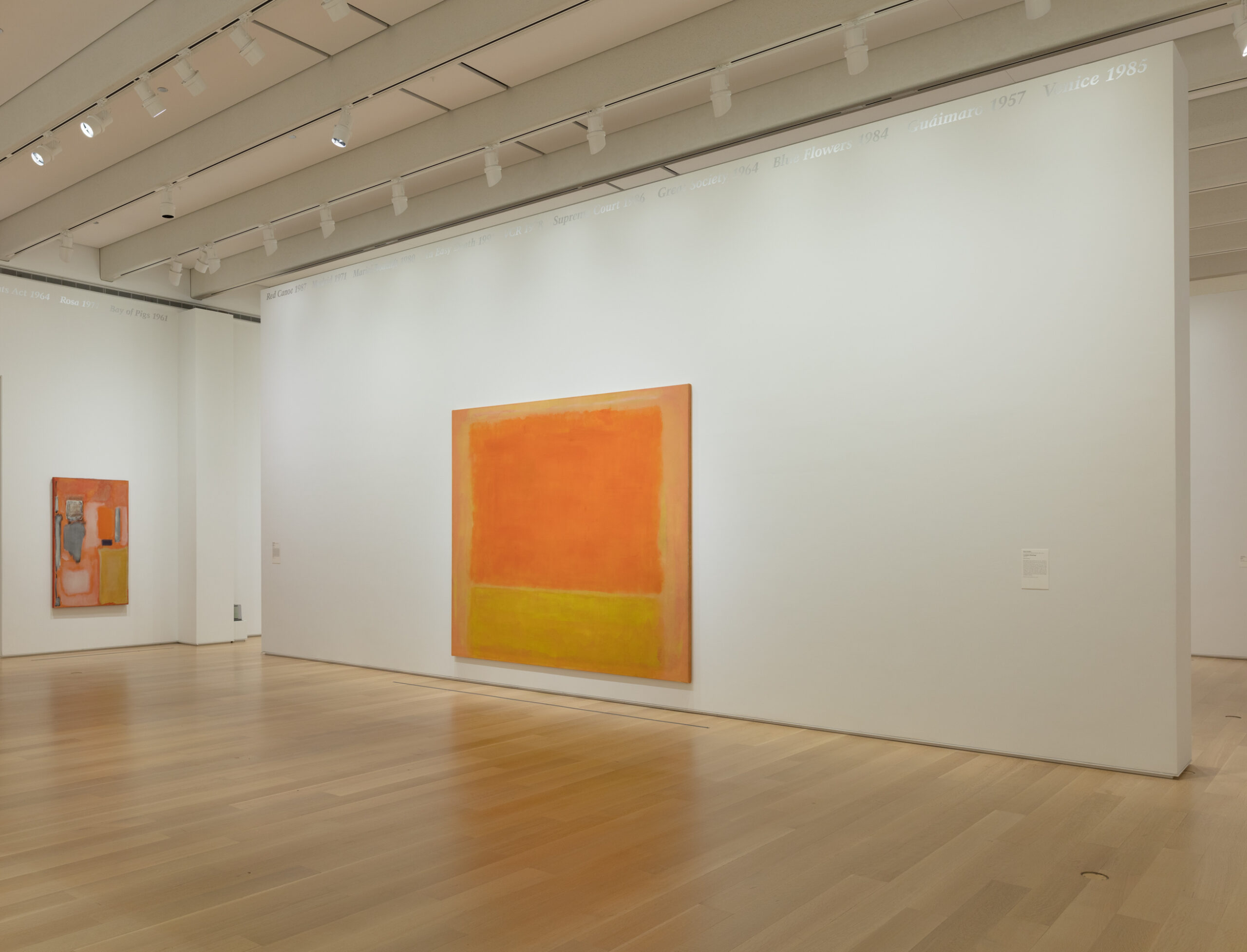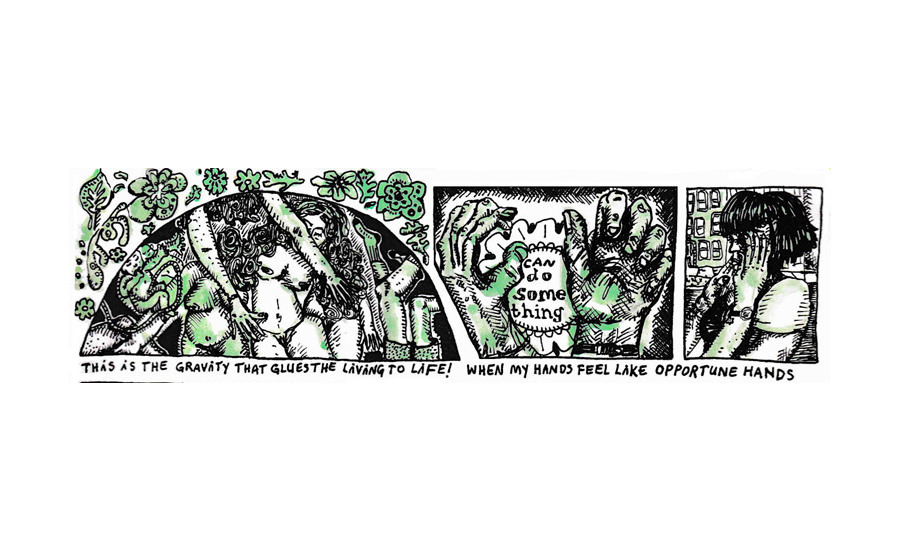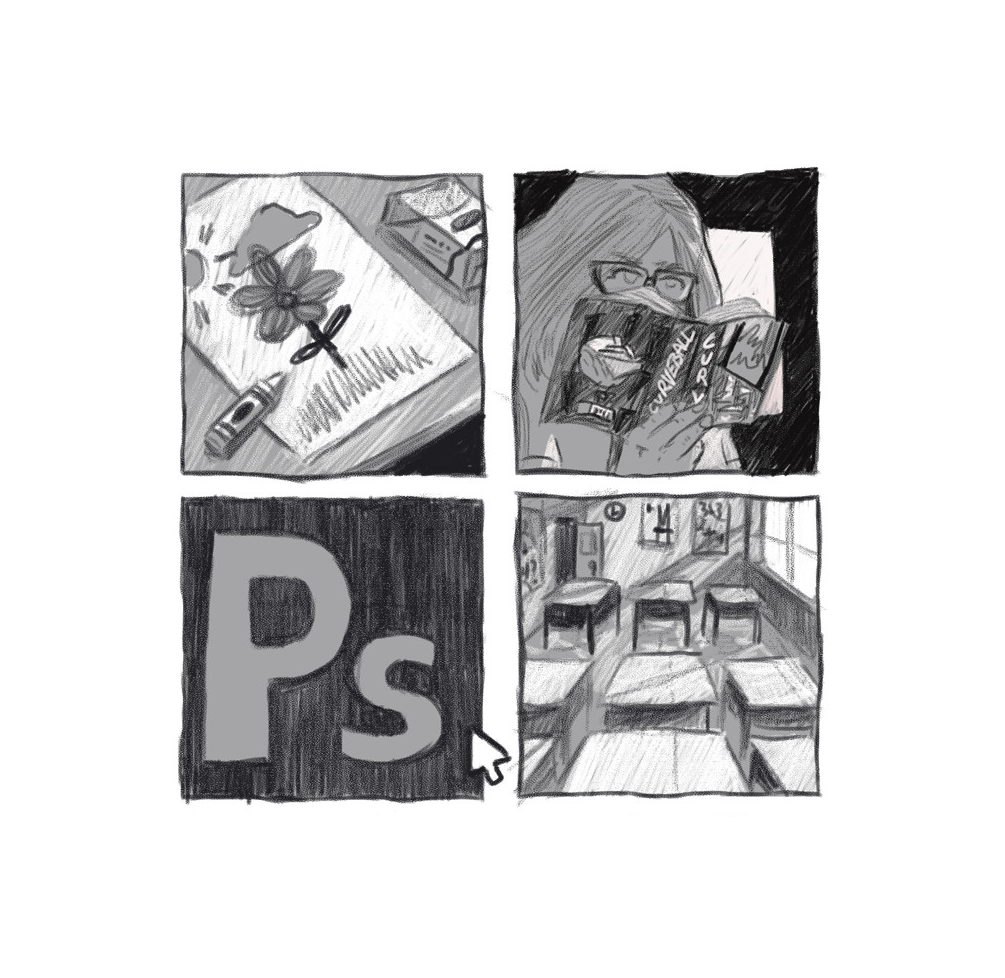
It is a bright day. The sun pours through the windows of my apartment in the morning, casting itself on the round white dining table and betraying specks of dust and parmesan, particles of an aged eucalyptus. I receive an email about the Art Institute of Chicago’s current exhibitions and see that “Mark Rothko / Felix Gonzalez-Torres” is on view. I am brought back to a younger body, curled up by the arm of the old, brown milk-smelling couch, grasping the furniture’s hard scaffolding, watching an actor version of Mark Rothko take a drag of a cigarette and sit before vast canvases. As for Felix Gonzalez-Torres, a moment from a previous art history class comes to mind, in which we stood in this gallery at the Art Institute, nearly all of us enamored with the “Untitled” (1989).
When I am at the Rothko-Torres exhibition, however, it takes a couple of moments to untether myself. People weave in and out of the gallery, and there is a bench in the center for socially distanced seating that a few visitors perch upon during my stay. The adjacent galleries are in the same lighting and guise but contain very different artworks — I had stepped into the room after viewing photographs of Richard Prince’s half-nude “Girlfriends.” Moreover, I have the impulse to critique the artwork in this exhibition before even settling into the space. This practice has been well-formed through an education in art history. Though it is nearly drilled in me, the role of judgment feels exhausting, often fruitless. I have been thinking about alternative ways of looking at art, especially this year. Rather than critique the works in this space, this article will briefly trace the contours of an experience. It is an attempt to trace the emotional or conceptual openings provided in the gallery — space that may take us elsewhere, that may heal.
Rothko was wary of calling his paintings abstract although formally, they are incontrovertibly abstract. Each painting in the gallery, painted at the height of his career from 1949 to 1954, follows the same format: a canvas painted a single color, with hovering horizontal blocks of different colors atop it. The paintings were produced with thin layers of paint, and the depth created by this technique as well as the rugged edges of the color blocks allow the paintings colors to project outward.
As I look around the room, I feel like I am being watched. The paintings are personable even as they radiate with something larger than the viewer’s mereness. Each appears solitary and self-contained. Yet they are social too: facing each other in silent togetherness. A chalky spring-like quality is cast out of Rothko’s “No. 2/No. 7/No. 20″ (1951). On the adjacent wall, “Untitled (Purple, White, and Red)“ (1953) makes me think about continuance and erasure; it is as if paint has been wiped away in the middle white portion, and there is something nakedly alive in the red.
As I take a step back, the text “Soft Pillow 1990” catches my eye from the wall above the painting. Felix Gonzalez-Torres’s “Untitled” (1989) is a timeline composed of running text at the top of the wall. It is composed of personal and public events, which seem to be in no particular order. The piece takes the architectural form of a frieze. Its commemorative tone is delicate, contemplative. The text is broken by the space between walls, so that the sequence seems both continuous and finite. The silver text of the words and dates glint or fade illegibly depending on how the light strikes it, so one must move around the room to read it in its entirety. Felix Gonzalez-Torres often asks viewers to participate in his work’s meaning and continuance. In this internal self-portrait, events can be added or subtracted to the timeline as it lives on.
An Easy Death 1991 VCR 1978 Supreme Court 1986 Great Society 1964 Blue Flowers 1984
Beneath these dates, a low-hanging Rothko painting entitled “Untitled (Painting)“ (1953/54) appears weighed down by an expansive orange square. But it is also luminous. Its brush strokes have an upward tendency, something of mountainous elevation to them. I stand close to it, and something is relinquished; I feel physically small and larger than myself. It is a replenishing moment, especially in our current circumstances: At Home 2021.
To be right up close to these paintings, in a time when we can’t casually be close with one another, stirs a quiet intimacy. During a time when we are so aware of ourselves — who we can hold, who we can breathe upon and breathe in front of — at a time when we move through the city in protective ways, shielding ourselves, sanitizing our bodies, feeling altogether untouchable: this exhibition. Here, we can allow the paintings to pulse before us, radiate, hold us. We might unwrap and unfold ourselves before something more deeply human and enduring than our conditions. Rest. I leave feeling more present, more just.
An invitation, as the days become warmer and we emerge from winter’s exhalation — if you need a place to be, I suggest it may be found briefly here.
The show is on view in Gallery 293 of the Art Institute of Chicago.







